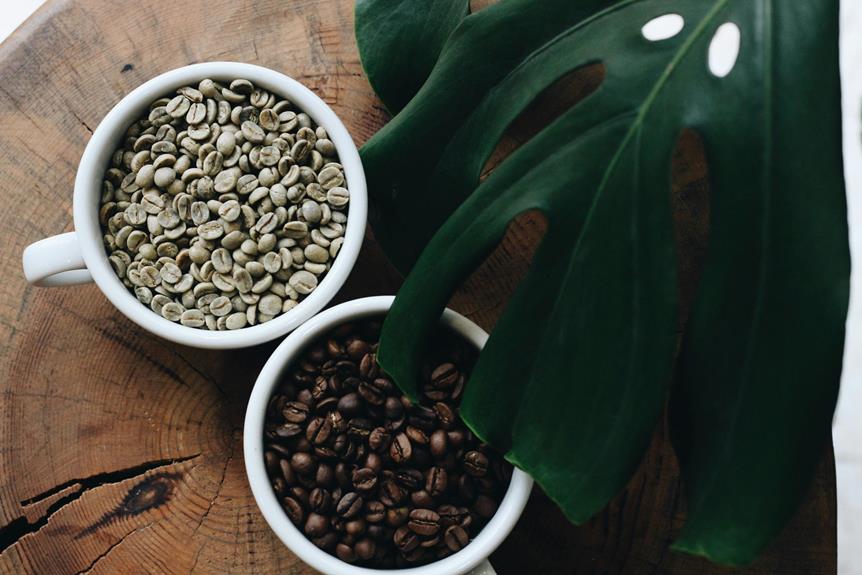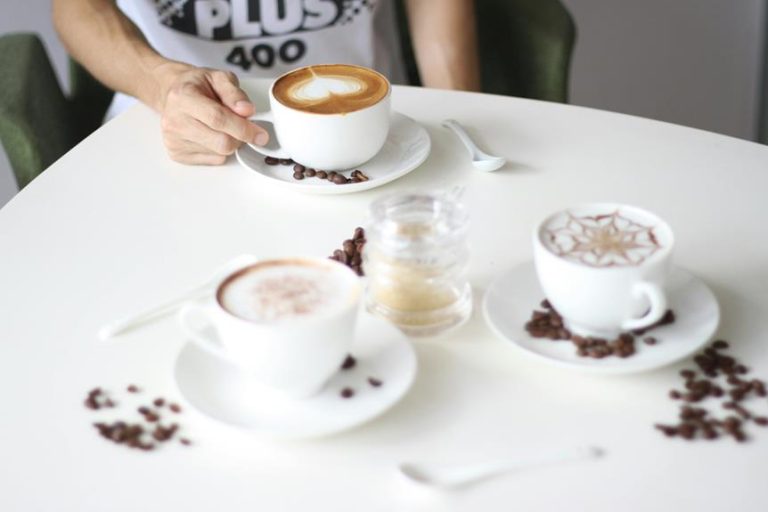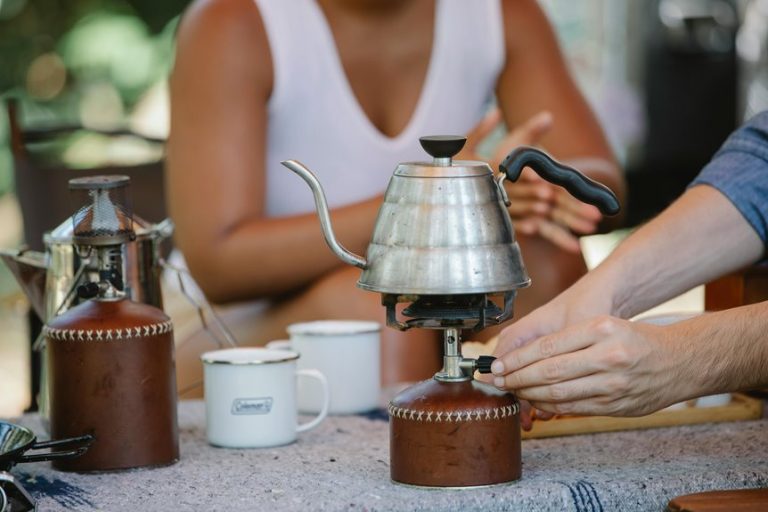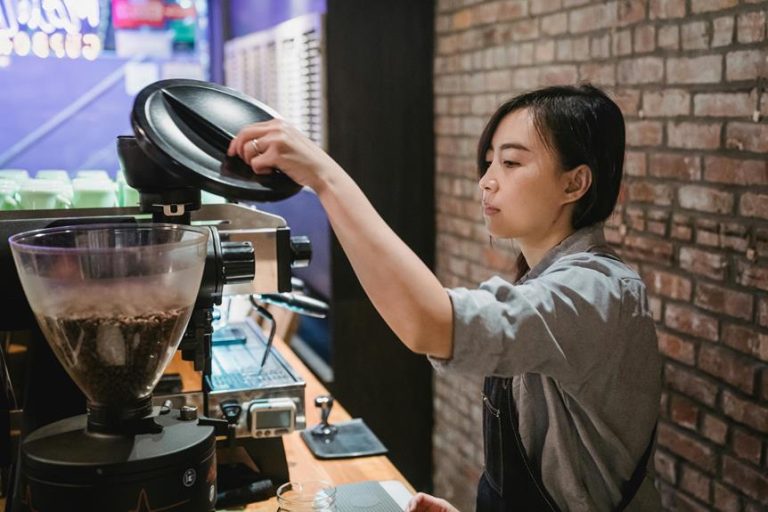Flat White Vs Latte Vs Cappuccino: a Detailed Comparison

As we explore the nuances between flat whites, lattes, and cappuccinos, it's clear that each drink offers a unique experience shaped by its ingredients and preparation. We might appreciate how a flat white showcases a bolder coffee flavor with its silky microfoam, while a latte provides a softer sweetness through its creamy consistency. Meanwhile, the cappuccino presents a delightful balance of robust espresso and airy foam. Understanding these variations can greatly elevate our coffee experience, but which drink really suits our preferences best? Let's take a closer look at what each has to offer.
Overview of Coffee Drinks
When we think about coffee drinks, it's easy to feel overwhelmed by the variety available, from the rich espresso to the creamy concoctions we often enjoy at our favorite cafés.
Understanding the historical origins of these drinks enhances our appreciation of coffee culture. Each beverage, like the flat white, latte, and cappuccino, reflects unique brewing methods and regional preferences, contributing to our diverse coffee experience.
Ingredients Breakdown
When we compare the ingredients of a Flat White, Latte, and Cappuccino, we immediately notice distinct differences in milk texture and coffee ratios.
Each drink employs varying degrees of steamed milk and foam, which greatly influences the overall flavor profile and mouthfeel.
Milk Texture Differences
The texture of milk plays an essential role in distinguishing flat whites, lattes, and cappuccinos, each offering a unique experience.
We can notice significant differences in milk frothing techniques and the resulting texture contrast:
- Flat white: microfoam, silky
- Latte: smooth, creamy
- Cappuccino: airy, frothy
- Milk temperature: critical
- Consistency: enhances flavor
Understanding these textures helps us appreciate each coffee's distinct character.
Coffee Ratio Variations
Building on our understanding of milk textures, we can now explore how the coffee-to-milk ratios vary among flat whites, lattes, and cappuccinos, greatly influencing their flavor profiles and overall drinking experience.
Typically, flat whites feature a higher coffee ratio, while lattes and cappuccinos incorporate more milk. These variations reflect diverse coffee origins and brewing traditions, enhancing each drink's unique character.
Preparation Methods
When we consider the preparation methods for flat whites, lattes, and cappuccinos, the coffee-to-milk ratio is essential in defining each drink's character.
We'll also examine the frothing techniques that create the distinct textures we enjoy, along with the brewing equipment that plays an important role in achieving the perfect cup.
Understanding these elements will help us appreciate the nuances that set each beverage apart.
Coffee-to-Milk Ratio
Understanding the coffee-to-milk ratio is essential for mastering the art of making a flat white, latte, or cappuccino.
These ratios cater to our individual coffee preferences, influencing our enjoyment of each drink.
Here's what we need to take into account:
- Flat white: higher coffee, less milk
- Latte: balanced coffee-to-milk
- Cappuccino: equal parts coffee, milk, foam
- Milk choices impact texture
- Personal taste shapes ratios
Frothing Techniques
To achieve the perfect froth for our flat whites, lattes, or cappuccinos, we need to master various frothing techniques that can greatly affect the drink's final texture and flavor.
Key factors include frothing temperature, which should be between 55-65°C, and the frothing methods we use, such as steam wands or handheld frothers, each producing distinct textures and flavors in our beverages.
Brewing Equipment Used
We often find that the brewing equipment we choose plays an essential role in the preparation of flat whites, lattes, and cappuccinos.
Here's what we typically rely on:
- Espresso machines
- Milk steamers
- Frothing pitchers
- Thermometers
- Grinder
Each piece of equipment influences the flavor and texture of our drinks, ensuring we achieve that perfect balance of espresso and frothy milk.
Flavor Profiles
When it comes to the flavor profiles of flat whites, lattes, and cappuccinos, the differences can be both subtle and striking.
Flat whites offer a rich, coffee-forward taste, lattes provide a creamy sweetness, while cappuccinos balance robust espresso with frothy milk.
Our taste preferences shape our sensory experience, making each choice uniquely satisfying based on what we seek in our coffee moments.
Texture and Foam
The texture and foam of flat whites, lattes, and cappuccinos play an essential role in defining each beverage's character.
We can observe distinct differences in:
- Foam longevity
- Texture perception
- Milk frothing techniques
- Density and creaminess
- Visual appeal
Each drink creates a unique mouthfeel, enhancing our overall experience.
Understanding these elements helps us appreciate the artistry behind our favorite coffee beverages.
Caffeine Content
Caffeine content varies considerably among flat whites, lattes, and cappuccinos, and understanding these differences can help us make informed choices about our coffee consumption.
Typically, a flat white contains more espresso, leading to a higher caffeine impact than lattes or cappuccinos.
We should consider our health considerations, as excessive caffeine can lead to jitters or sleep disturbances, influencing our beverage choices.
Popular Variations
Although we often think of flat whites, lattes, and cappuccinos as standard coffee drinks, there are numerous popular variations that cater to diverse palates and preferences.
These variations highlight regional preferences and cultural significance, enriching our coffee experience.
Some notable ones include:
- Affogato
- Mocha
- Cortado
- Dalgona coffee
- Vietnamese iced coffee
Each offers a unique twist on the classic trio.
Choosing Your Ideal Drink
When it comes to choosing our ideal coffee drink, understanding the unique characteristics of flat whites, lattes, and cappuccinos can greatly enhance our experience. By reflecting on our drink preferences and desired taste experience, we can make informed decisions. Here's a quick comparison to guide us:
| Drink | Milk Texture |
|---|---|
| Flat White | Microfoam |
| Latte | Creamy |
| Cappuccino | Frothy |
Conclusion
To summarize, each coffee drink—flat white, latte, and cappuccino—offers a unique experience shaped by its ingredients and preparation methods. By understanding the distinct flavor profiles and textures, we can better appreciate our choices. Whether we're craving the bold richness of a flat white, the creamy comfort of a latte, or the balanced frothiness of a cappuccino, knowing what sets each drink apart allows us to choose our ideal cup more thoughtfully.






